Andrew Marshall is a working drummer who has played and produced for dozens of artists and bands. Currently he’s supplying beats and live production on Billie Eilish’s When We All Fall Asleep, Where Do We Go? tour. zZounds sat down with Andrew in the depths of the United Center during their stop in Chicago to talk hype summer tours and everything behind the kit.
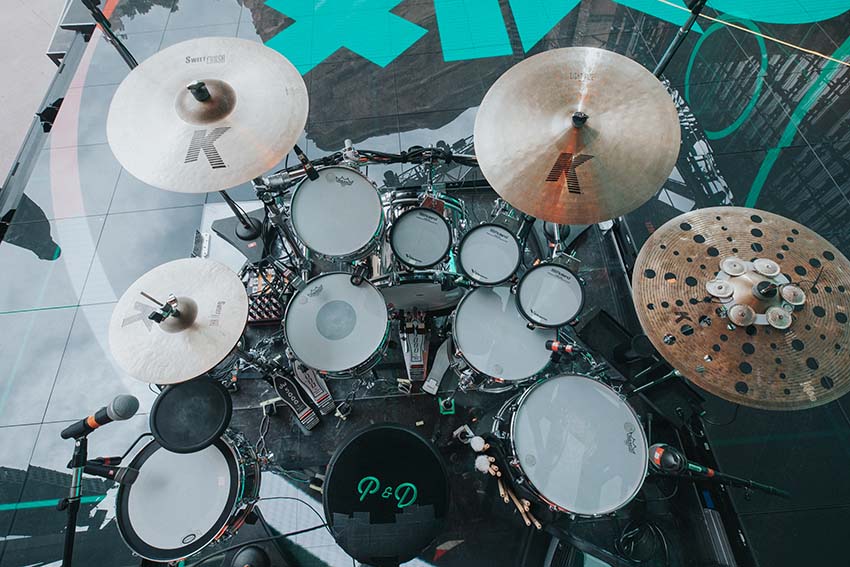
zZounds: You just got a new kit from Gretsch for the When We All Fall Asleep Where Do We Go? tour. Can you give us a rundown of your whole rig?
Andrew: Yeah so, I signed on with Gretsch in January but I’ve been playing the drums forever. I’ve been backlining them and they’re rad. I mean, I’ve had all kinds of Gretsch kits — mostly USA customs, but I’ve played Brooklyns that sounded great. I had a Brooklyn kit on our last European tour — amazing. I’ve played Renowns that sounded great. I had a ’50s Round Badge kit in Japan — awesome. The company has been around forever and some of my favorite players play Gretsch.
So anyways, I got the USA Custom and it’s 22” x 14”, 12” x 8” Rack, 14” x 14”, 16” x 16”, vintage kinds of sizes. I like the 14” depth kick drums — they’re really punchy. And then we’ve got three snares– they’re all 6 ½ x 14, chrome over brass is the main, and then we got an aluminum and wood for the side snare, just to see which one we ended up liking.
zZounds: Do you swap those snares in and out or have you just decided on one?
Andrew: We still have both, we’re using the wood right now and it’s great. We’ll change it up to the aluminum at some point, but right now it’s a backup. I’m sure it’s going to be awesome too. The story of the finish is kind of funny. So, I went to Billie and I showed her the Gretsch website and I said, “Okay, here are the finishes they offer for the USA Customs,” and we were kind of thinking a White Marine Pearl could be cool. I was like, “That’s kind of classic.” She said, “Yeah that’s sweet,” but then, “What if it could be the same color as the hardware?” and I was like, “I don’t know! It’s not on the website but let me ask.” So I asked my rep at Gretsch and asked “Can we do chrome?” and he said, “Yeah, we’ve done it before. We can do that if you want,” so I was like, “Alright, let’s do it!” So we ordered it in chrome and it’s perfect. It’s perfect for this show. Billie’s visual sense is just unbelievable. I mean, everything visually in the entire project comes from her. The visuals, lights, merch designs, all the branding, photos, everything, and so true to form, she had this instinct of chrome would work well for this set. For this stage show, I’m on an LED floor. There’s video under me and the whole stage is an LED floor and there’s three video walls so the lights reflect off the chrome.
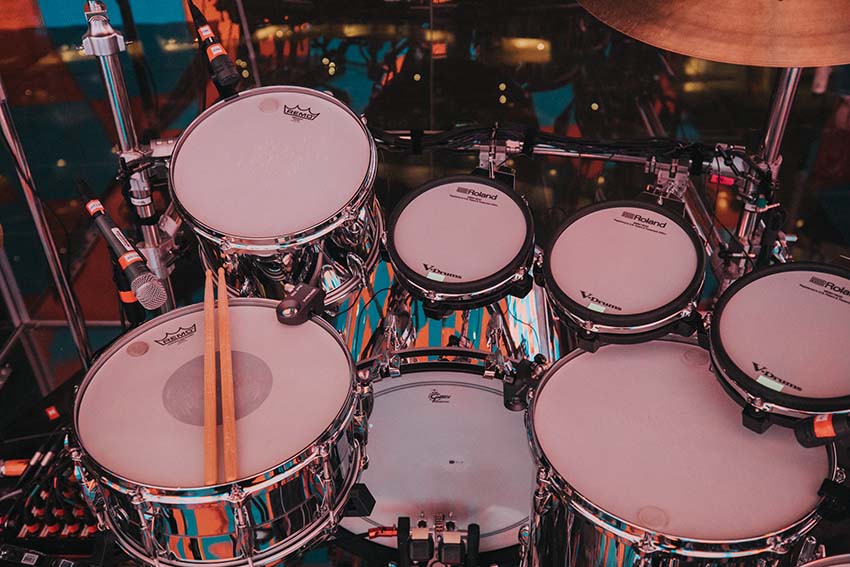
zZounds: Yeah, it almost blends into a lot of photos from this tour. Mirrored chrome is every finish and no finish at the same time.
Andrew: Right! It’s really nice. Plus there’s a rack and a bunch of pads and the whole kit looks kind of futuristic.
zZounds: You were previously using the Roland SPD-SX multipad and moved on to the Roland TM-6, Is that what you’re using right now? The trigger module?
Andrew: Yep! This is something that’s been in the making for a long time. The [Roland] SPD is a great piece of gear. I still use it at home, I’ve used it with other artists, so it’s great in a lot of situations. With Billie, I’m playing a ton of samples and I found that the pads are just too small. They’re just little two inch squares and there’s a lot of sounds that I have to hit that are really important. If I miss the pad it’s like —
zZounds: That verse is ruined.
Andrew: Right. So, I was like, “I need some bigger pads and I need a more ergonomic, more “drumistic” way of playing.” Like, “I wanna do some V-drums,” because they feel really good. They have a nice bounce to them and they’re nice and big. I don’t have to look at them when I’m hitting them — they just feel like drums. But, there’s so many samples that if I wanted one V-Drum pad for every sample I need to play in a song I’d have like 20 pads.
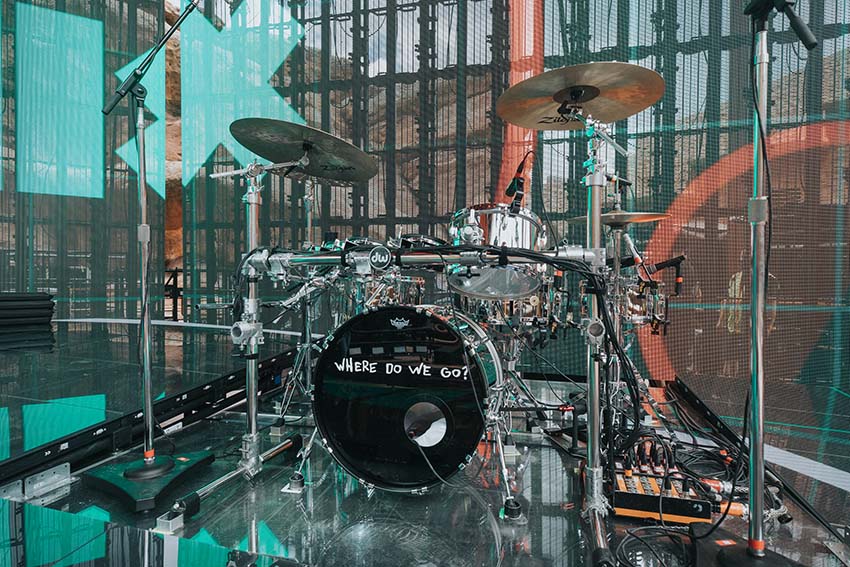
zZounds: Yeah, like the Terry Bozzio kit or something.
Andrew: Exactly. So I was thinking three V-Drums over there would be nice and ergonomic — I could put three next to my rack tom. And what ended up happening was I did all the automation in Ableton to change all the sounds all the time so that I can cover everything. Some songs I’m playing 10, 15 samples and the three V-Drums- and I have one more PD8 on my left- sometimes the entire palette changes from a verse to a chorus, if I need different sounds in the chorus, or from the last chorus to the outro, or the second chorus to the bridge- sometimes they’re changing every beat. If I have a clap on beat two, and a snap on beat four, the one pad changes.
And honestly, it’s way more musical. It makes it feel like drums. There are some songs where in a verse there are four different kick drum samples and I’d have four different pads for all those samples. Now, it’s my electronic kick and it just plays whatever sample I need in that given spot- it’s all automated to the tracks. So now I’m not thinking about choreography as much as I am just about groove. It’s just boom bap.
zZounds: You’re in the pocket no matter what.
Andrew: Yeah. It’s just way nicer to play. It gets me out of thinking about ten different pads. It puts me into the groove and I feel like I can interact more with Billie and Finn [Finneas O’Connell, bassist and keyboardist]. It’s just way more musical
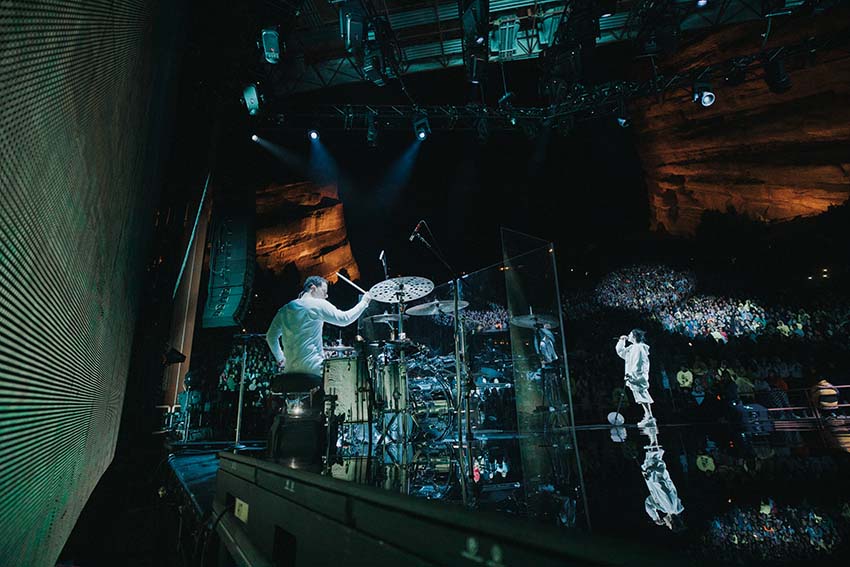
zZounds: So speaking of them, you’ve also worked with Vérité and Ex Cops which I really like..
Andrew: No way! Ex Cops, that’s awesome
zZounds: How do you, as a professional drummer, spark that collaboration and fit with so many artists behind the kit? How was that first practice or that first rehearsal? What is that like?
Andrew: Wow yeah, well thank you for that! I think my goal is always to do right by the music. I think it’s a Roy Hargrove quote- something like this- “Be good to the music and the music will be good to you.” I’m always trying to do right by the artist, do justice to their songs, make them happy, make them feel good. Those things are my goal above all else. I’m not trying to throw in my licks. I don’t care. I’ve found that that’s what gets you hired. It might not get you likes on Instagram if your playing is really simple.
If you care about the song and you like the songs, and you respect the artist, which I do… not from an “Oh I’m so good at being cool…” I just do. They’re great songs. I just want to do right by the group. By great songs. I’ve been lucky enough to play to with amazing artists whose music I love, and that was the case with Ex Cops, that was the case with Vérité, so all that to say, I come into the first rehearsal as prepared as I can be. I don’t want to show up and have questions like, “Oh, how long is the bridge on this song? Wait — do we go around the chorus once or three times at the end?”
Especially when you’re dealing with electronics and we get into rehearsal and I start getting notes from the musical director or the artist like, “Okay, play the pad on the second verse but play the real snare on the third verse.” Or “We’re going to change this up completely,” or “We’re going to add an intro.” Once you start having to keep things like that in your head, if you have basic questions about, “What’s the groove on the verse?” or “What’s the tempo?” you’re never going to remember everything. Preparation is huge for me. Other than that just being cool, trying to do a good job, don’t be abrasive, sort of common sense stuff.
zZounds: It feels like that’s coming out more and more where Instagram is highly influencing tastes of young drummers.
Andrew: Yeah, I mean everybody’s got different goals and I’m not here to disparage what anyone is trying to do. Express yourself musically however you want, but for me personally, coming up it was always about being a working drummer, being a gigging drummer, being hired by artists and producers. It was funny — when I was a kid, even going back to when I started playing at 9 [years old], the people I was checking out were Steve Gadd, Vinnie Colaiuta, Jeff Porcaro, people who played on sessions and did tours.
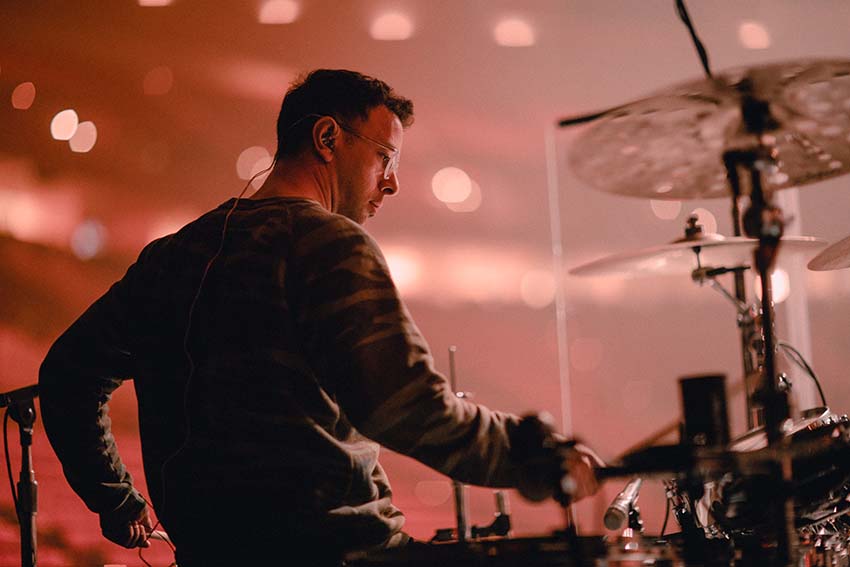
zZounds: That’s quite a mature taste for a young drummer.
Andrew: I know! It was crazy. I’ve got to give it up to one of my earliest teachers, this guy Jason Devlin in Westchester. Amazing, awesome drummer. He would always be like, “Now you have to learn how to play this Latin groove because someone’s going to ask you how to do it on a gig,” or “You have to know how to lower the volume of your hi-hat without lowering the volume of anything else because some producer is going to ask you to do that in the studio.” Always based on, “You’re going to be asked to do this on a gig.” It wasn’t like, “You need to know how to this because, I don’t know, whatever,” it was just work. “How do you work?” That’s always been the focus
zZounds: Speaking of when you started drumming, what was that first moment you knew you needed to be behind the kit, playing drums?
Andrew: Honestly, I just thought it looked cool and I asked my parents to buy a drum kit. I think it was like that, yeah. I might have passed a drum set in a store window. I think I had a friend who played drums as a kid.
zZounds: That helps!
Andrew: Honestly, I just thought it looked cool. My family isn’t really musical. It just somehow stuck with me. I was lucky that they were willing to put up with me banging in the basement for like six years until I sounded halfway decent.
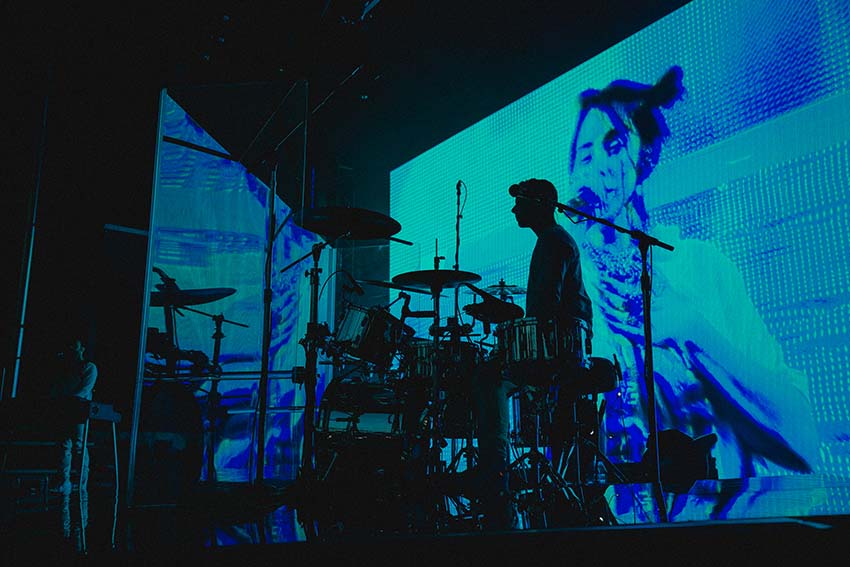
zZounds: Yeah, great payoff though! Obviously, When We All Fall Asleep, Where Do We Go? was a highly anticipated album, came out to huge fanfare, and the tour is one of the most hyped if not THE most hyped of the summer ‘19. You’ve worked with a ton of artists- what is it like being behind the kit on such a hype tour, so much so that you’re moving from these 1,000 cap theaters to these 10,000 cap stadiums?
Andrew: It’s amazing. I’m just so grateful, honestly. It’s been the dream forever. I would look up to players who are on these kinds of gigs and wonder what it was like. I remember the first time I was flown somewhere to play a show. It was like, “I’m in an airport! I’m on a plane!”
zZounds: I think to most people that is crazy!
Andrew: Right? And it was. And it still is. I don’t take it for granted. I have my own dressing room! It’s amazing. And especially with this project — it’s like a family. Billie and Finn’s family, their parents are with us and they’re all awesome and it feels like a big extended family. Everybody knows each other and hangs out. You get to play great music every night. I feel like in this situation in particular I’ve gotten to dive deep with the electronics and develop this thing that- I think some other people are doing it- but it’s fairly unique to the situation too. Yeah it’s awesome, I’m just trying to groove every night, play as well as I can, sound good, play powerfully.
zZounds: When We All Fall Asleep, Where Do We Go? is such a unique record. So different from what’s out there and it’s definitely a trendsetter. What makes this tour different from shows you’ve run through with other artists?
Andrew: Billie is such a unique artist, Billie and Finn — that pushing the envelope happens everywhere on her team — from the label side, the publicist, booking agent, the crew, our front of house — everybody is developing new techniques and pushing boundaries to get this done. And same with me — I’ve done a lot of electronic stuff, I’ve ran tracks and I’ve built Ableton sessions, but this particular situation is like — I mean there’s just a lot of samples, the grooves are really specific, so there’s a lot of things that I play that aren’t- they’re sort of counterintuitive to normal drumming. I’m just executing programming with different limbs. Sometimes I have to play snares with my right hand because the pad’s over there. Just getting to the music and trying to do it right.
zZounds: It’s so interesting because I know that Billie and Finn obviously co-write a lot of stuff together- do you and Finn collaborate on that kind of stuff? Is he triggering things as well? Is the backend behind Billie working together because essentially it’s a three piece, right?
Andrew: So that’s a whole process. This time around when we started rehearsing for the album we were in rehearsal for probably four or five days before Billie even came in and I had been programming for months before that. Actually I was sent the album at the beginning of our European tour, I think sometime in early February and just started programming.
The thing is, for example, usually I’ll come in with the more electronic version of a song — as close to the record as I can go because the sounds on the record aren’t — I mean there are snares and kicks kind of — but that’s about it. Most of the other live elements of the kit are added beyond what’s on the record. Anyway, if I want to come in and play it like the record that means that I might have to have a ton of automation in place to even execute something or I’ll have to have a bunch of samples chopped out of the stems so I need to show up day one with all of that prepared. And then we can go and say, “Okay so in the chorus, let’s go to the real kick there.” But I already have to have the sample in there just so everyone can hear it. In rehearsal we can’t be like, “Oh can you play the snare that’s on the record there?” and I can’t go, “Oh let me go the stems and chop — give me half an hour.” Well there’s two different snares in the verse and I have to automate that — you know what I mean? It has to be there. So, I come in with that.
We have a musical director and Finn comes in and basically every time we start a new tune we just play it down and our musical director will mute parts from the tracks that he knows we’re going to play. From there we workshop stuff like, “This should be a live kit,” or if Finn’s playing electric bass maybe we’ll switch him to a different sound or different patch. He’s got a MIDI controller, a Nord, electric bass, guitar, and an SPD— and on the MIDI controller he’s also triggering sort of the same amount of sonic palette that I have. It’s bass sounds, it’s synth sounds, vocal chops, all kinds of stuff from Mainstage.
zZounds: Oh he uses Mainstage?
Andrew: He uses Mainstage. The whole stage is wired together through MIDI so the Ableton playback rig- my sounds are in the playback session and then that sends program changes to his set of computers all the way on stage right and so playback tech fires the track and then all the sounds change on the whole stage. We don’t have to push buttons, generally. Anyway, we just workshop things in rehearsal, play stuff a lot and try to feel out what’s going to work live as opposed to what worked on the record, just give things a live feel.
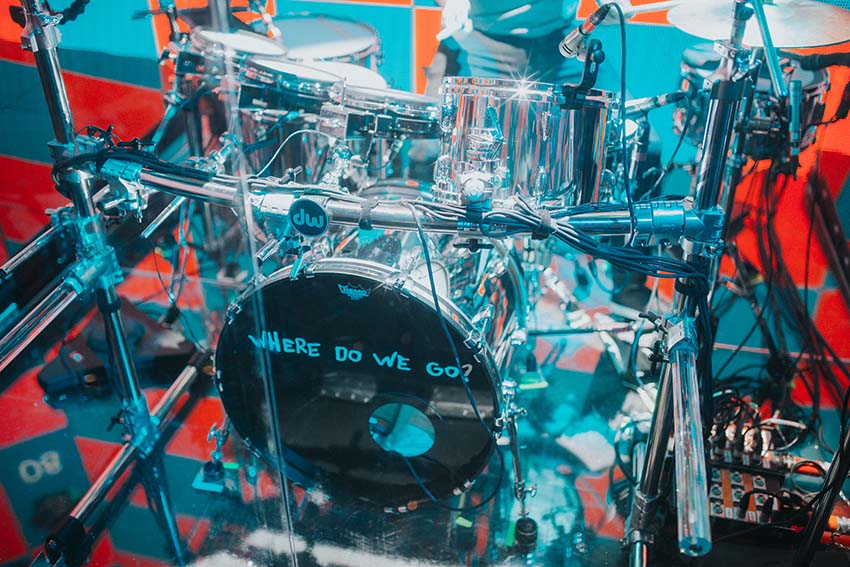
zZounds: You being prepared, coming in with compositions that might not be what you’re going to end up with but being open to ideas and interpretation by the music director is key?
Andrew: Yeah, you want to spend time in rehearsal playing. You don’t want to spend that time chopping samples. Obviously there’s a lot of stuff that happens — we need to level things, we need to whatever — things need EQ, patches need massaging, but I don’t want to be the one telling everybody in the room, “Hey, I need time to stare at my computer,” because its takes me hours, and hours, and hours. I don’t know how much time I spent programming before we got on tour. I just prefer to have it done already. It’s just way easier.
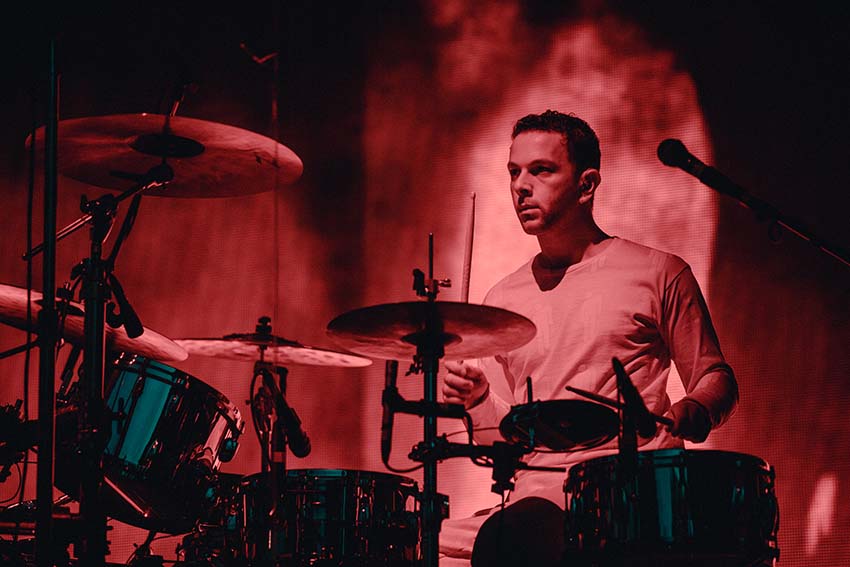
zZounds: One of the things that is noticeable — seeing you out there with Billie — it’s hype-inducing and a great stage presence. What makes this kind of tour so fun to play?
Andrew: Yeah. Number one, it’s great songwriting. That’s the baseline, always. I think any of these songs, Billie and Finn could play with an acoustic guitar and they’d be great because they’re great songs. And actually, they have done that many times. They do acoustic radio sessions all the time. So honestly, that’s most of it for me. I always say great songs play themselves. If the music is great, I’m happy. It can be three people in the audience, it can be 10,000, it can be in rehearsal, it doesn’t matter. That’s what I care about- good grooves, strong, solid, locked rhythm section, and let the singer do their thing.
zZounds: It kind of sounds like you’re appreciative of being part of something bigger than just the drums and the programming.
Andrew: Yeah. Actually I wrote a side bar for Modern Drummer that’s coming out in September. I went deep into explaining how I do things and at the end of it I was like, “You have to remember that it’s all in service of the music.” Serve the song. Serve the artist. Obviously if you’re an experimental solo project person or you have a band then whatever, but the only reason I do any of this is to execute the music well and to make a good live show. That’s it. The music is awesome. I feel like we work really hard on making it work and translate live. Billie and Finn are amazing performers. Billie has an amazing message. She’s a role model for so many people. It goes beyond music. She’s really connecting for all the right reasons. It’s amazing that people are connecting to it and like it, come to the shows and are so excited. It’s great and like I said I don’t take it for granted. It’s amazing.
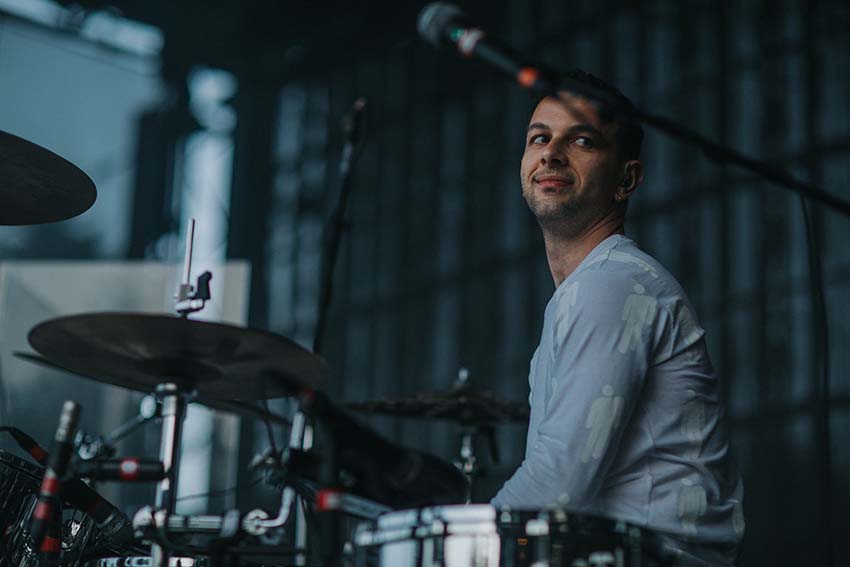
zZounds: You’re known as a “workhorse drummer.” What is your advice to somebody with the skill, the work ability and ethic but who wants to make drumming their main hustle and expand their network in music?
Andrew: I think one of the main things for me was trying to play as much as I possibly could and just crush it in every single situation. Treat every situation like you’re playing Madison Square Garden with Elton John. Doesn’t matter what it is — treat it like that. Come in prepared, be cool, show up on time, have the right gear, all of that and your reputation will spread. That’s kind of how it was for me. I took literally anyone who asked me to play ever for the last, I don’t even know how many years — starting in high school. I’d pick up the phone and say, “What time?” Doesn’t matter. And I’ve done some weird gigs over the years. I found myself in some weird situations
zZounds: New York’s such a great place for that though. It’s perfect.
Andrew: Yeah. Oh man, I have so many stories of these ridiculous things that took place, but you learn something every situation. Even if it’s what not to do or how much a band sucks.
zZounds: Totally, that’s probably the most important thing to learn. Right?
Andrew: Probably, yeah! Honestly, the weird bad ones were probably the thing that taught me the most. I feel like you just have to – if you want to work, if you want to play with bands and artists, you have to play with bands and artists. Just say yes, hang out, not in a pushy way. I feel like people kind of get that at this point — but if people ask you to play just say yes and crush it all the time and try to keep learning about stuff
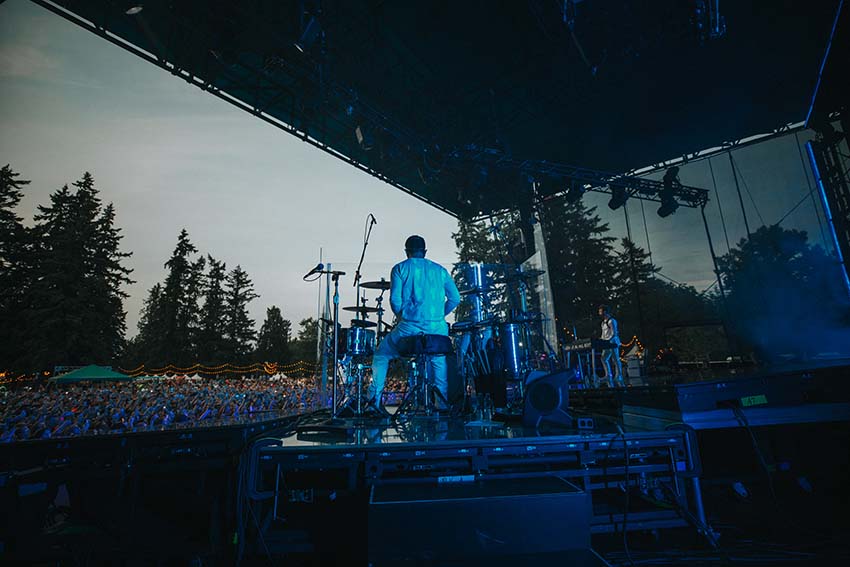
All photos in this article were taken and provided to zZounds for use by Matty Vogel, touring photographer on the When We All Fall Asleep, Where Do We Go? tour.
Transcription by Hannah Eppley

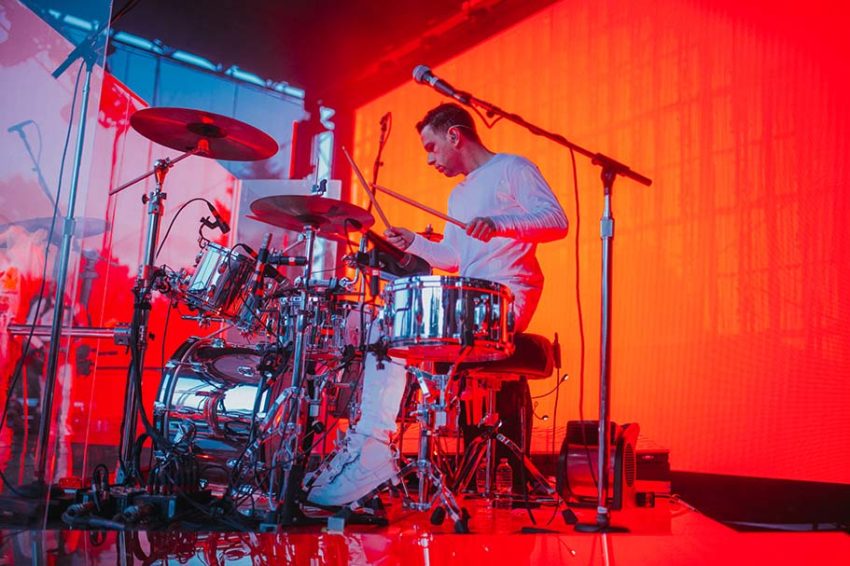


Leave a Reply